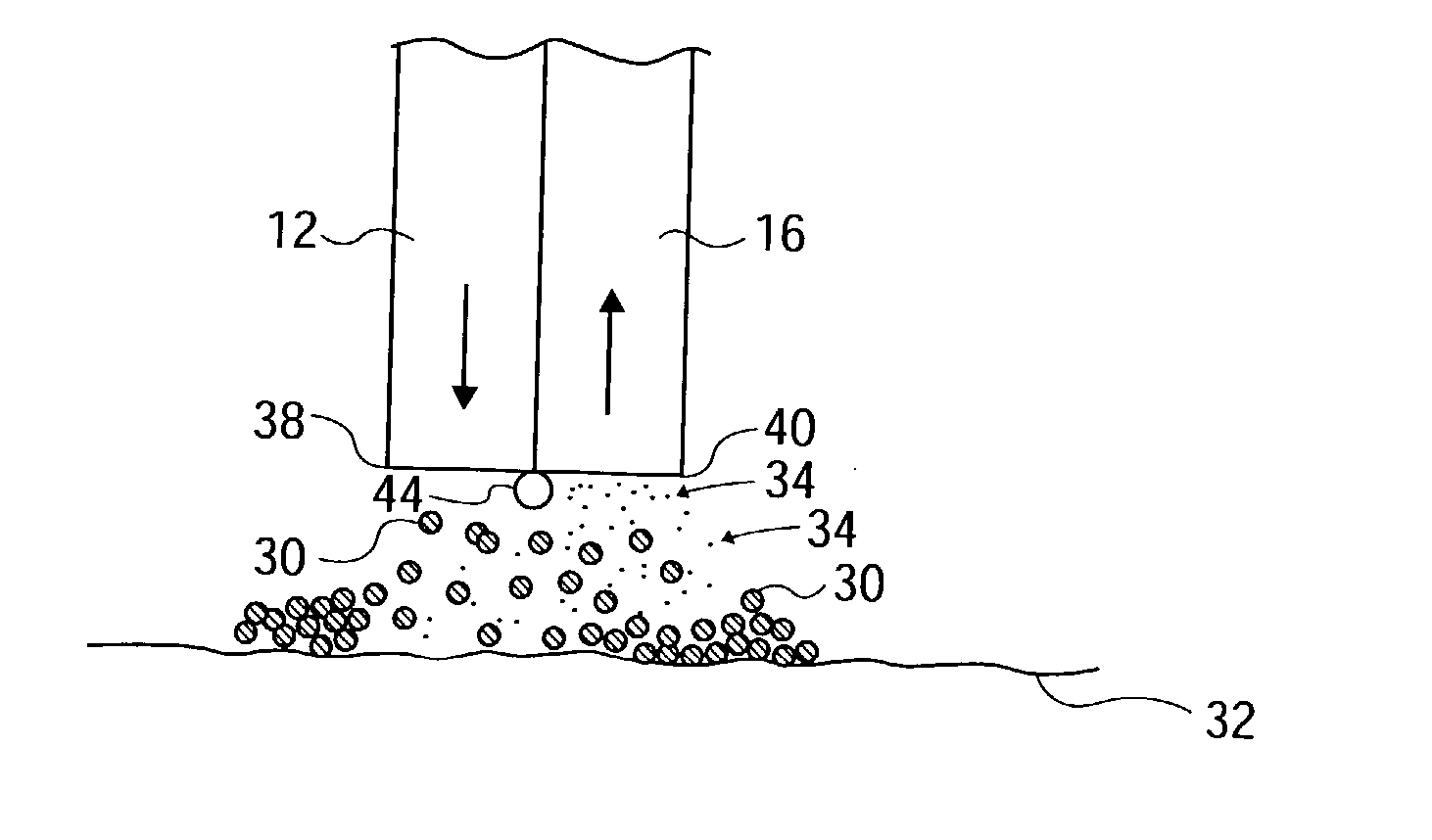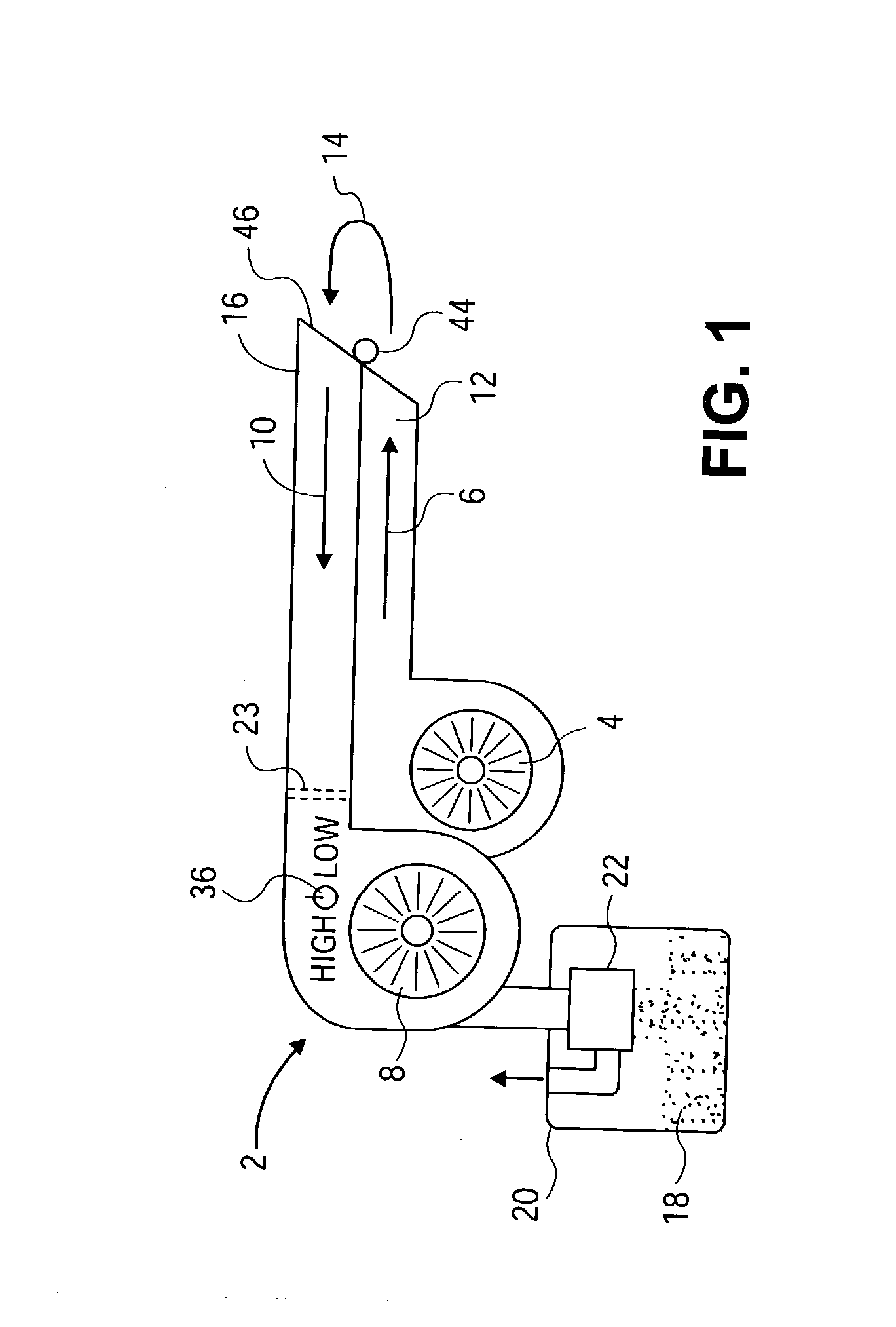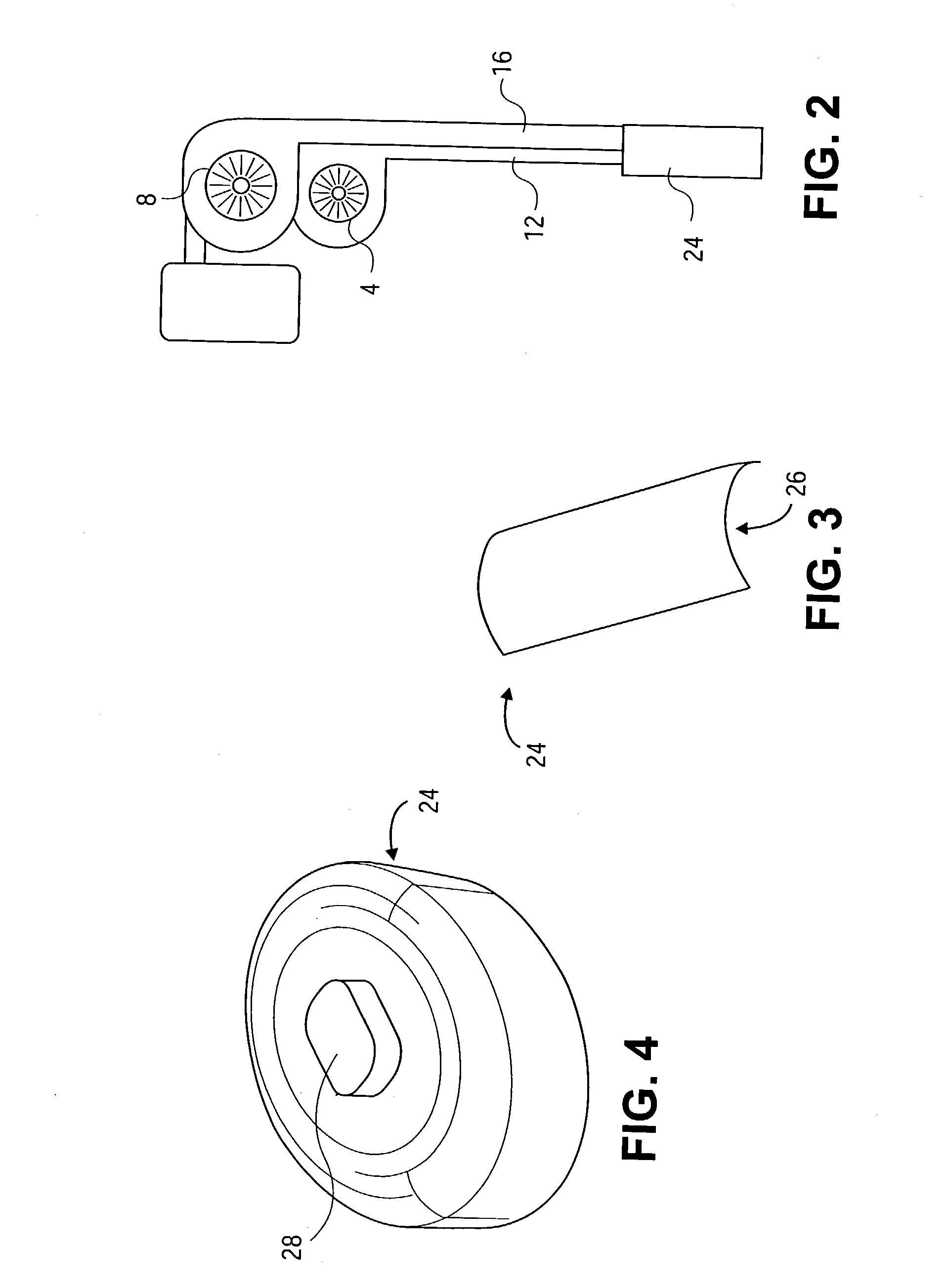Cleaning system for animal litter and bedding
a technology for cleaning systems and animal litter, which is applied in the direction of solid separation, aviculture, gas current separation, etc., can solve the problems of contaminated bedding materials, small allergens and germs, and large animal waste, and achieves the effect of monetarily as well as environmentally expensive disposal of bedding materials
- Summary
- Abstract
- Description
- Claims
- Application Information
AI Technical Summary
Problems solved by technology
Method used
Image
Examples
first embodiment
[0034] FIG. 1 illustrates the cleaning system 2 of the invention which includes a blower motor 4 producing a first fluid stream in the direction of first arrow 6, and a vacuum motor 8 producing a second fluid stream in the direction of second arrow 10. When the first fluid stream exits the blower nozzle 12 and comes in contact with a contaminated animal bedding (see FIG. 5), at least a portion of the first fluid stream joins the second fluid stream, traveling in the direction of third arrow 14, carrying contaminants from the animal bedding into the vacuum nozzle 16 in the direction of the second arrow 10. The vacuum nozzle 16 carries the contaminants 18 to a storage bag 20.
[0035] In a particular configuration, the storage bag 20 is a cleanable cloth storage bag which filters the contaminants from the second fluid stream by passing the second fluid stream through one or more walls of the cloth storage bag. Alternatively or additionally, a bio filter, HEAP filter, reverse pulse filter...
second embodiment
[0049] FIG. 8 illustrates a configuration of the cleaning system 50 of the present invention including a cyclonic separator to separate the animal bedding from the contaminants. The cyclonic separator creates an air turbulence region within the separator for separation of the contaminants from the animal bedding. Cyclonic separators for use with vacuum cleaners are well known in the art. Examples of particular patents which describe the general nature and operation of cyclonic separation, particularly for its use in a household vacuum cleaner include: U.S. Pat. No. 6,350,292 to Lee et al. (issued Feb. 26, 2002), U.S. Pat. No. 6,344,064 to Conrad (issued Feb. 5, 2002), and U.S. Pat. No. 6,261,330 to Dyson et al. (issued Jul. 17, 2001), the disclosures of which are hereby incorporated herein by reference. Cyclonic separation used in a vacuum cleaner, however, is designed to separate dust and allergens from an air stream for disposal of the dust and allergens and release of a filtered ...
fourth embodiment
[0064] In the invention, shown in FIG. 12, the animal bedding cleaning system 130 is much like the animal bedding cleaning system 100 shown in FIGS. 10 and 11, and many of the components are the same. However, the animal bedding cleaning system 130 includes a shroud 132 which is funnel-shaped to create a turbulence zone within the funnel as the air stream draws contaminants to the vacuum 134. It will be understood by those of ordinary skill in the art that the features used for the vacuum 134 of this embodiment may be interchanged with or added to features on the other vacuums shown and described with reference to other embodiments of the invention. The vacuum 134 shown in the embodiment of FIG. 12 includes a dust collection chamber 136 and a reverse pulse filter 138 as is well known in the art for filtering dust fines from an air stream. In some instances, an optional screen filter 140 may also be included between the shroud 132 and the dust collection chamber 136 to further screen...
PUM
 Login to View More
Login to View More Abstract
Description
Claims
Application Information
 Login to View More
Login to View More - R&D Engineer
- R&D Manager
- IP Professional
- Industry Leading Data Capabilities
- Powerful AI technology
- Patent DNA Extraction
Browse by: Latest US Patents, China's latest patents, Technical Efficacy Thesaurus, Application Domain, Technology Topic, Popular Technical Reports.
© 2024 PatSnap. All rights reserved.Legal|Privacy policy|Modern Slavery Act Transparency Statement|Sitemap|About US| Contact US: help@patsnap.com










